Apart from fun and rewarding hobby, home fish farming provides sustainable way to produce meat for the family and community.
Besides, you can use your spare land for profits by raising fish at home. Aquarium fish may add aesthetic value to your homestead.
But begin farming with easy to grow fish and fish in small scale and here is a list of 15 best fish species for home farming.
1. Tilapia
Tilapia are hardy and can withstand between 20°C and 30°C, so homesteaders living in the cool area prefer these fish.
They thrive well in streams, ponds, rivers, streams, and lakes and are less commonly found in brackish water. In your backyard, you can also farm them in open-air earthen ponds.
They like to eat plankton, algae, and other vegetable matter, along with worms, small fish, and insects.
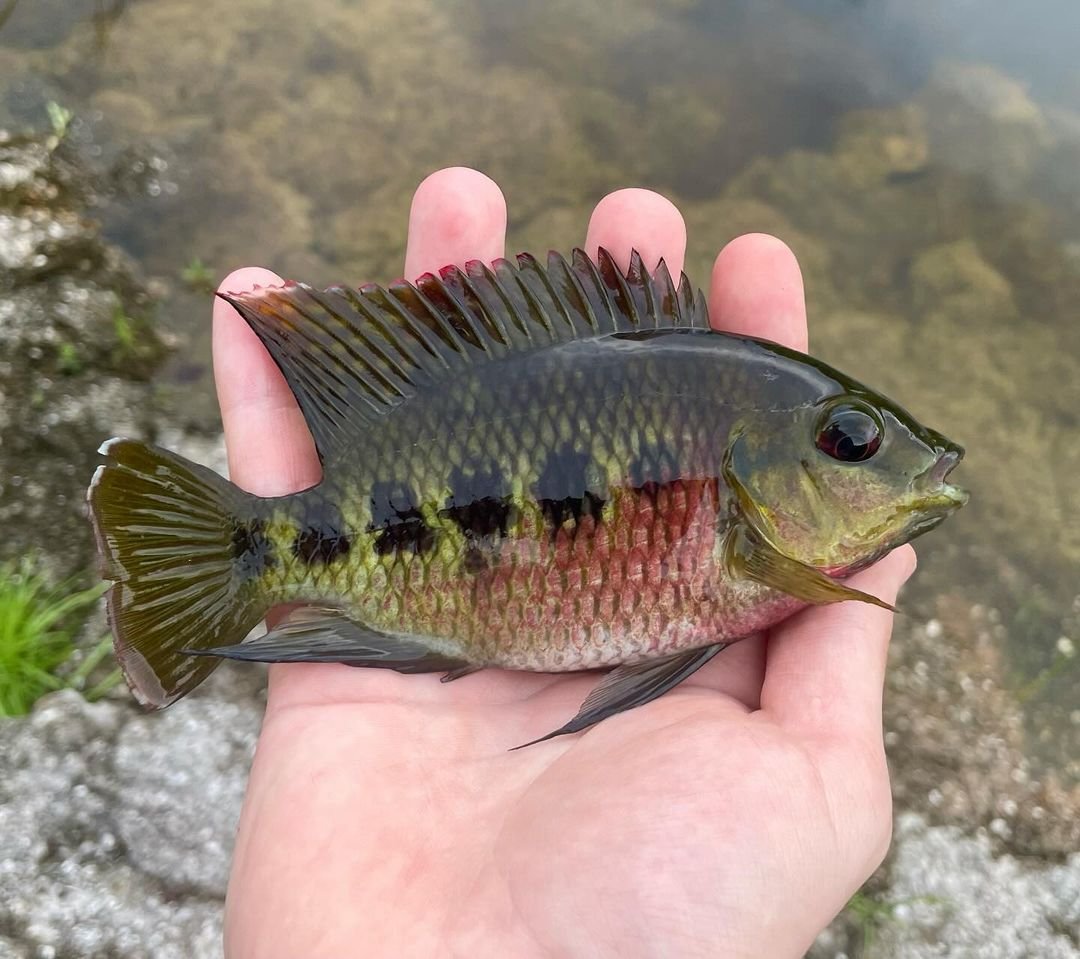
These freshwater fish are fast-growing and live up to 10 years and reach 10 pounds in weight.
You can harvest one pound of Tilapia in as little as 240 days or within 4-7 months. Their white meat has a mild, slightly sweet flavor and a flaky texture.
Some common Tilapia fish include Nile, Blue, and Mozambique Tilapia.
2. Catfish
Catfish are a warm water species, living in temperatures ranging from 24. to 29 or up to 37 degrees Celsius.
Naturally, they are found in freshwater rivers and lakes, brackish estuaries, and also saltwater habitats. However, you can raise them in your backyard pond or tank at home.
Cory Catfish or other small or medium-sized Catfish can be kept in 5 to 10-gallon tanks.
But you will need to set up at least a 30-gallon tank for larger catfish.
Catfish live on worms, salamanders, leeches, maggots, caterpillars, insects, frogs, or even small fish. They require protein-rich foods.
So, you can provide them with soybean or cottonseed meal and corn and by-products, or wheat by-products.
Depending on the breed, you can feed catfish once to three times a day.
They enjoy the company of tilapia, koi, and crappie, so you can raise them together if your pond is big enough.
You can harvest 1 pound of catfish in six months or 4-7 pounds in a year. Many find their firm meat moist, sweet, and mild flavored.
Consider Channel, Eel Tailed, and Brown Bullhead as the best fish for your home farming.
3. Trout
As long as there is cooler, oxygen-rich water around your home, you can get to farm trauts well.
They are easily found in freshwater lakes, rivers, and wetlands. But you can also farm them in your backyard pond or aquaponics under the heavy canopy of trees.
Trauts feed on aaquatic-born insects, terrestrial insects, annelids, other fish, crustaceans, leeches, worms, and grass hoppers.
You can also feed them daily or every other day. Remember to feed them when the water temperature is between 45 and 65 degrees Fahrenheit.
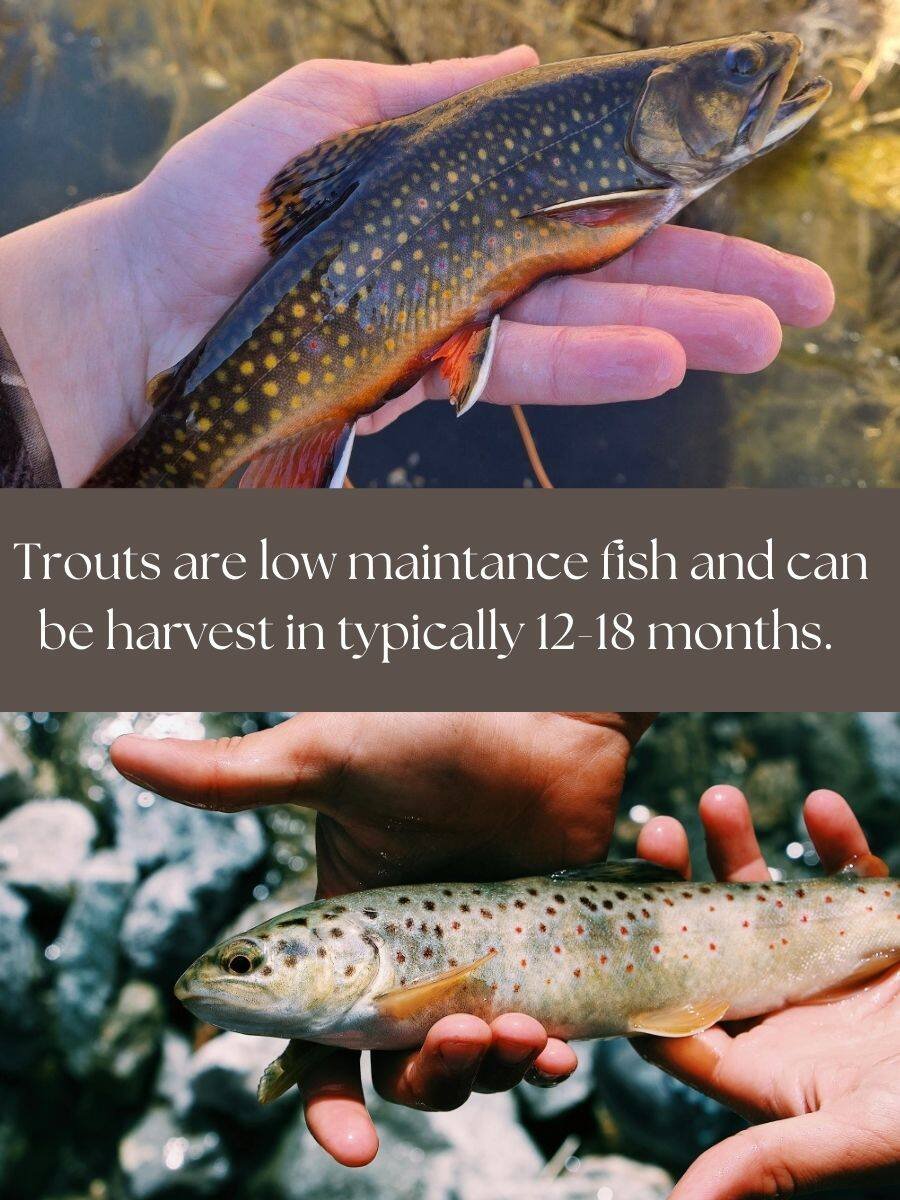
I personally suggest to get Rainbow Traut as they are fast growing breed, crowding-tolerant fish, and can be farmed for both recreational and meat purposes.
You can expect 4-6 inches after two years, 6-9 inches by their third year, and 8-12 inches by their fourth year.
Other breeds that are also good for home farming include Brook trout and Brown trout.
4. Carp
Carps are often found in the warm, turbid waters of eutrophic lakes, reservoirs, and even sloughs.
Water temperatures above 42 degrees Fahrenheit are ideal for them. They are resilient and can tolerate 70-90 degrees Fahrenheit, but they grow best between 80 and 85 degrees Fahrenheit.
To farm carp at home, manage 2,500 – 3,000 gallons minimum pond size.
They eat insects, worms, the tender parts, and seeds of water plants. You can also offer them brown bread, prawns, cockles, mussels, silkworms, lettuce, oranges, sweetcorn, peas, and brussels.
It is recommended to feed carp once a day, but you can feed them 2-3 times if the fish are large in size.
Carps are also know for breeding, which breed twice from January to March and from July to August in tropical areas.
You can expect to harvest 2 pounds of carp within 5–7 months of feeding. Their meat is compared to that of favorite saltwater food fish, including cod, offering a mild, slightly sweet flavor.
Some popular carp fish species for farming at home are common carp, grass carp, and mirror carp.
5. Koi
Koi fish serve dual purposes, such as ornamental and occasional food sources.
They are large with elongated bodies and long fins and painted with colors including red, white, brown, gray, black, yellow, and green.
They look like oversized goldfish, so they can add aesthetic value to your backyard pond or indoor tank.
Koi are cold-water fish that prefer 15–25 degrees Celsius water conditions. Their natural habitats include ponds, lakes, and streams with minimal flow and muddy bottoms.
I recommend you design a pond of at least 1000 gallons with some substances, including smooth gravel substrate, rocks, and hardy plants.
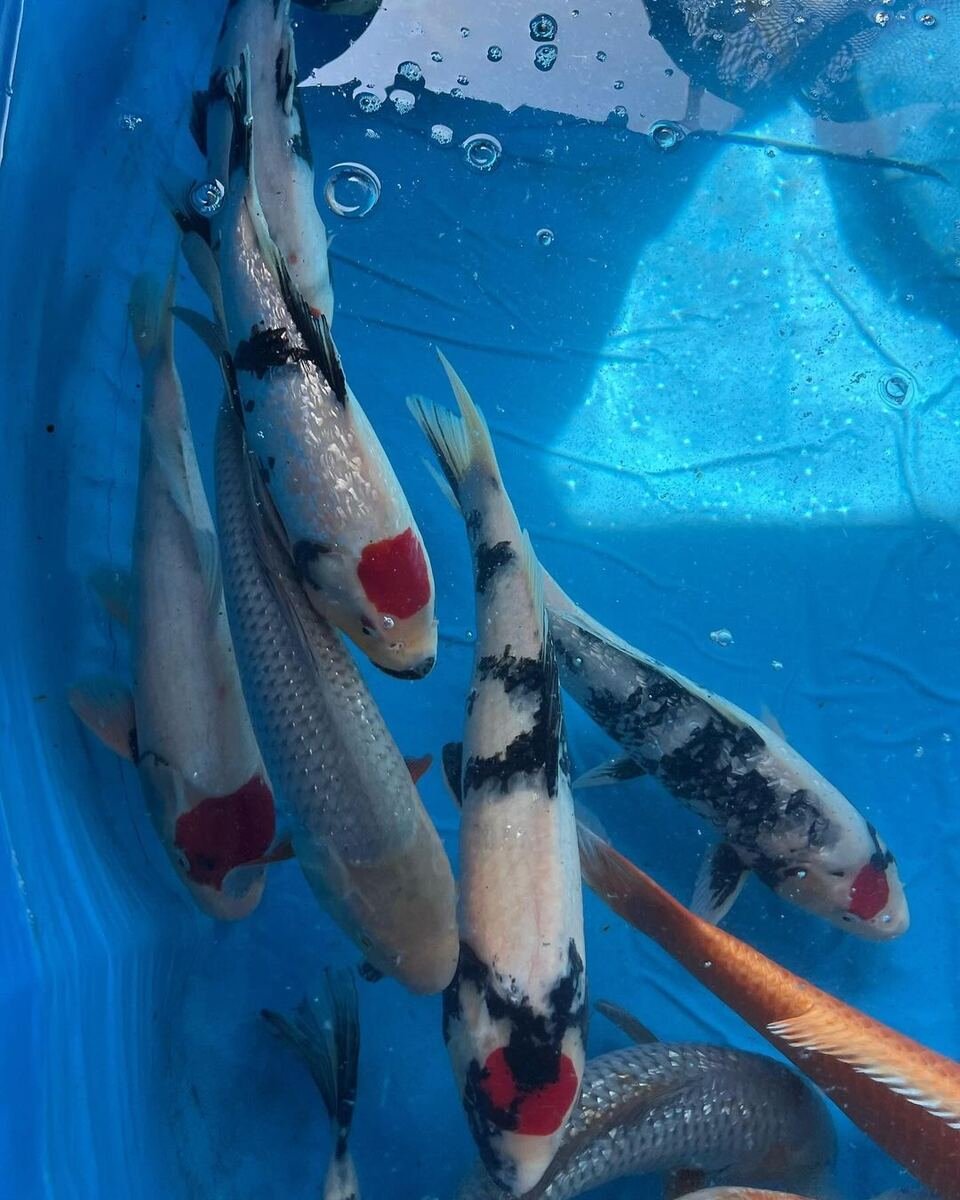
Koi eat anything that humans do. Anything that isn’t high in carbohydrates, such as shrimp, fruit and vegetables.
They will be happy if they are served cereal, lettuce, rice, peas, and watermelon. You can feed them once to four times a day.
Also, they can grow 5 inches per year, offering mild meat, but many find their meat unpalatable.
Some preferable species can be Kohaku, Taisho Sanke, Showa, Ogon, and Bekko.
6. Goldfish
Goldfish are easy-to-manage ornamental fish and can be the food for large fish.
These cold-water fish are found in ponds, lakes, rivers, streams, marshes, bogs, and swamps. Depending on the species, they can survive at 15 degrees Celsius to 21 degrees Celsius and up to 20-23 degrees Celsius.
You need to design a pond at least 1.5 feet deep with an air pump and 2 feet deep without an air pump.
Also, ensure the pond is at least 10 square feet of deep-water space. If you want to grow them in a tank or aquarium, consider 5 gallons per every 1 inch of an adult goldfish’s length.
Goldfish eat fruits, vegetables, and grains. You can offer them frozen blood worms, flakes, pellets, gel food powders, and brine shrimp duckweed.
Feed these fish 1-2 times daily. And goldfish grow 2 inches in 3 months and to 3 inches by the end of its first year.
You can expect them to breed in the springtime. Goldfish are not preferable meat fish as they have a muddy taste so farmers grow for aesthetic value.
Some popular goldfish species are Ranchu Goldfish, Oranda Goldfish, Comet Goldfish, Ryukin Goldfish.
7. Bluegill
Bluegill is a popular choice for small-scale farming as warm-water fish.
They prefer the water to be between 18 and 26 degrees Celsius and can tolerate up to 35 degrees Celsius. These fish are often found in warm, quiet water such as ponds, lakes, reservoirs, and slow-moving streams and rivers.
If you plan to build a pond, design it with an 18-36-inch depth and an area of 0.5 acres.
For the aquarium, I prefer a 55-75 gallon tank. These warm-water fish feed on grass or ghost shrimp, crickets, small worms, chopped giant worms, wax worms, grubs, and larvae.
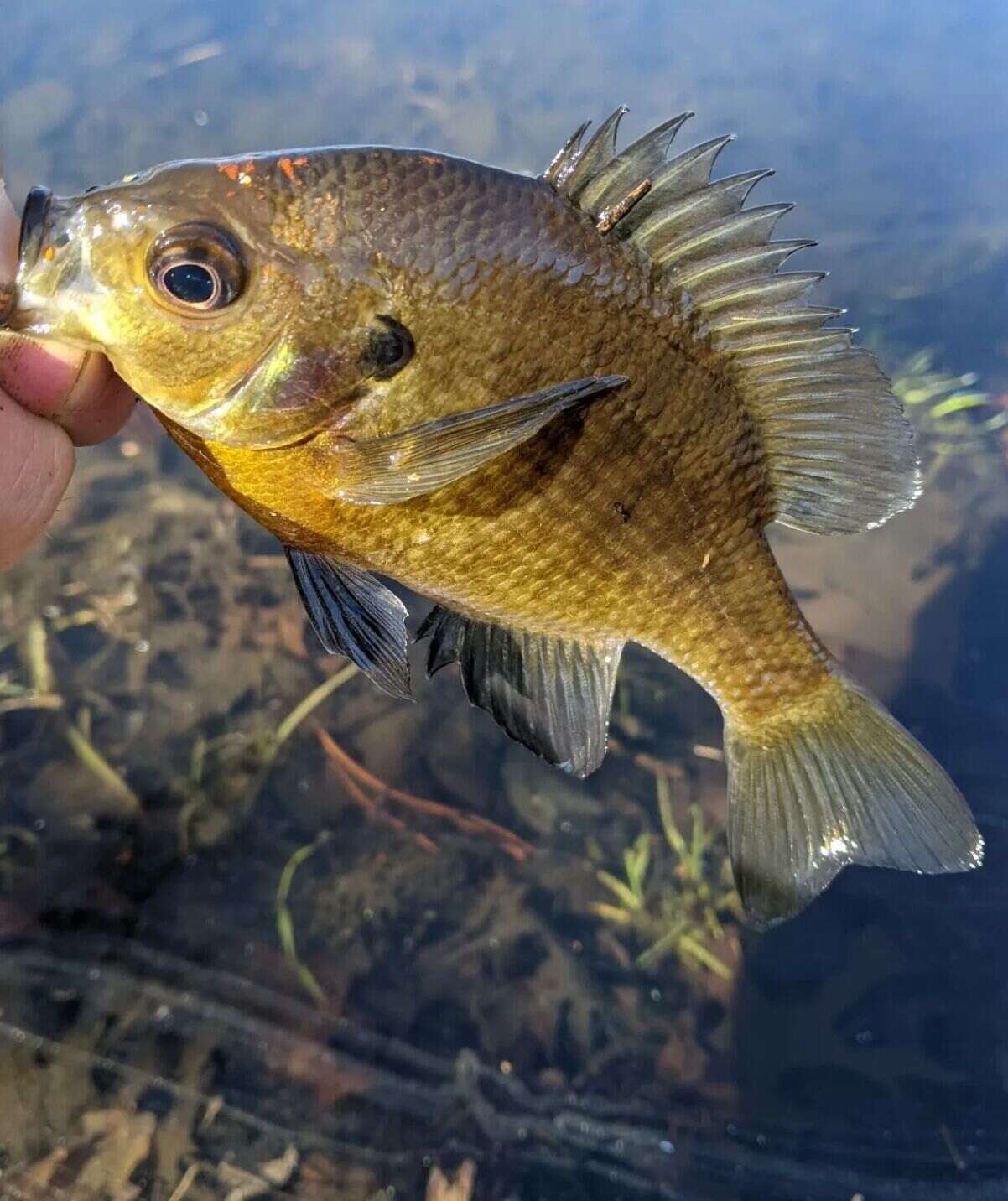
You can feed them every other day in the pond and once a month in a tank.
Bluegill reaches at least 4-5 inches in 3 years. Many find their meat mild and sweeter than crappie.
You would like to raise northern bluegill sunfish and coppernose bluegill sunfish for your homestead.
8. Perch
I like Yellow Perch, as they are a growing species found in ponds, lakes, slow-moving rivers, and reservoirs in clear water near vegetation.
These cool water fish prefer 21 to 24 °C living conditions but can thrive in 17 to 25 °C, too.
When building a backyard pond, consider that it should be 6 to 12 feet deep and 0.2 to 0.5 acres spacious. For a tank, you can measure at least 20-50 gallons of water for every perch.
Yellow Perch has natural foods such as aquatic insects, small crustaceans, and invertebrates, including snails and leeches.
You can also offer worms, larvae, crayfish, and small fishes for farming these fish at home.
You can feed these fish two to three times a day and expect to harvest 7 to 10 inches of fish in 6-12 months.
I find their meat has a mild, sweet flavor. You can also farm Silver perch.
9. Bass
Bass fish is a versatile choice with good adaptability. They prefer to live in a condition between 18 degrees celsius and 26 degrees celsius.
But they can tolerate temperatures from 21 to 29 degrees Celsius.
These cool-water fish thrive in vegetated lakes, ponds, swamps, and the backwaters of creeks, pools, and rivers.
If you want to farm in the backyard, prepare the pond with a minimum depth of 3 to 4 feet based on a 1000-5000 fish count per acre. The tank setup needs to be at least 100 to 150 gallons for an aquarium.
Bass fish have natural foods that include crayfish, frogs, snakes, small turtles, fish fry, bluegill sunfish fry, worms, shrimp, and even insects like grasshoppers.
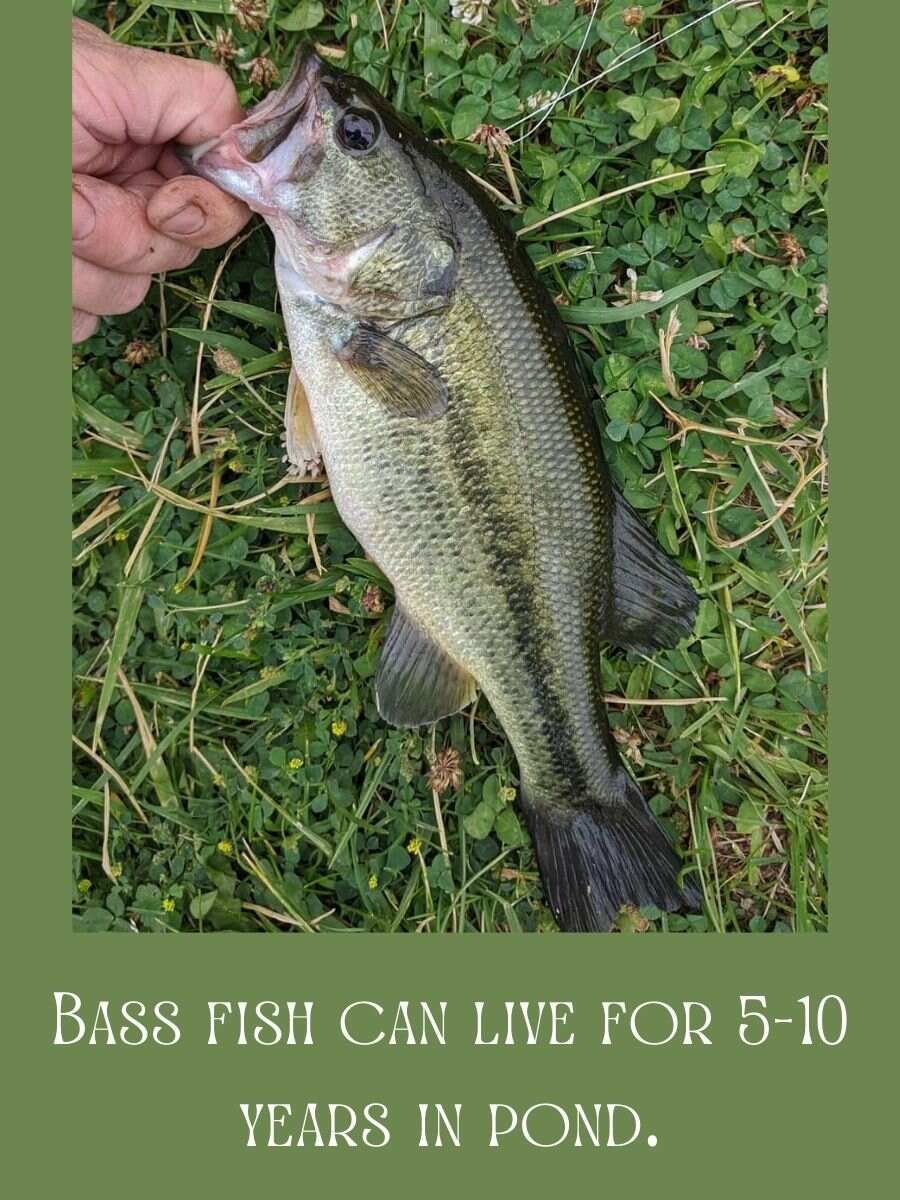
You can feed them once to 2-4 times a day.
These fish grow 4 to 12 inches per year. Their flesh is tender and succulent with a mild, slightly sweet flavor.
You can select Largemouth and Smallmouth bass fish to farm at the home.
10. Guppies
Guppies are ornamental fish suitable for small tanks, and they are often found in freshwater habitats such as streams, rivers, pools, and ponds.
They thrive in the water with a temperature between 21. and 27 degrees Celsius. Don’t let the temperature fall to 15 degrees Celsius.
I recommend raising guppies in the tank with 5-12 gallon water.
These fish eat small insects, crustaceans, algae, and vegetables, including cucumbers, lettuce, courgette, spinach, potatoes, carrots, and bell peppers.
You can also provide them with bloodworms, brine shrimp, high-quality flake, or pellet food.
Depending on their size, you can feed guppies once or twice a day. They take four or five months to mature and breed. And they are easy to breed.
Guppy enthusiasts like to keep Fancy, Red Tail, HB Blue, Blue Grass, and Tuxedo.
11. Crappie
Crappies are low-maintenance fish that thrive in warmer southern regions. They are adaptable and found in freshwater lakes, ponds, sloughs, backwater pools, and streams.
They prefer to live underwater at 20 degrees Celsius but can tolerate 10-21 degrees Celsius.
If you want to farm crappies in your backyard, build a pond at least half an acre in size and around 5-10 feet deep. Don’t worry; you can manage them in multi-species ponds.
Also, the pond with vegetation, fallen trees, or boulders can be a happy place for crappies.
Their natural foods include earthworms, mealworms, the occasional goldfish, small amphibians like frogs, dehydrated shrimp, zooplankton, aquatic insects, and crawfish.
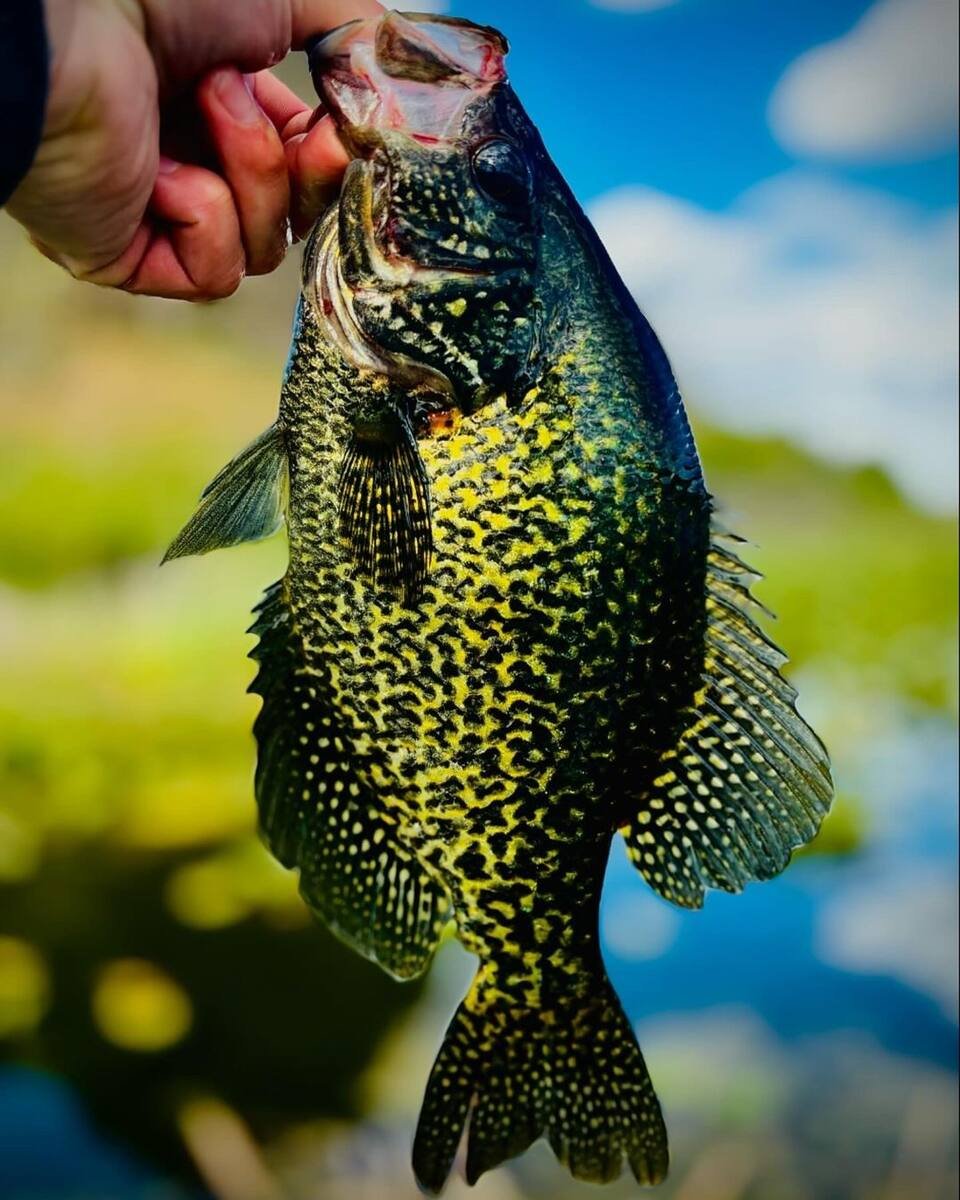
You can feed crappies daily or every other day and expect them to grow 5-9 inches per year.
I like their meat, which is mild and sweet and has no fishy flavor. Some popular species, such as black, white, and hybrid crappie, can be added to your pond.
12. Burbot
Burbots have a natural habitat in deep, cold waters of lakes, rivers, and reservoirs.
They thrive in water temperatures ranging from 15 to 18 degrees Celsius but can also tolerate 23 degrees Celsius. For burbot fish farming, you can build a 5-foot pond to an acre and 3 to 15 feet deep at your home or homestead.
These adaptable fish eat zooplankton and insects, whitefishes, lampreys, Longnose Suckers, sculpins, and even occasionally other burbot.
You can feed them once a day at night when they are active.
They take five to seven years to reach 18 inches in length and produce meat with a mild, almost sweet taste.
13. Arctic Char
Arctic Chars are suitable for cold water environments and require clean, well-oxygenated water.
Thriving at 4 to 15 degrees Celsius, they are often found in cold northern, deep in lakes and rivers. If you live in a cool place, you can farm them in a pond with a depth of 3 meters.
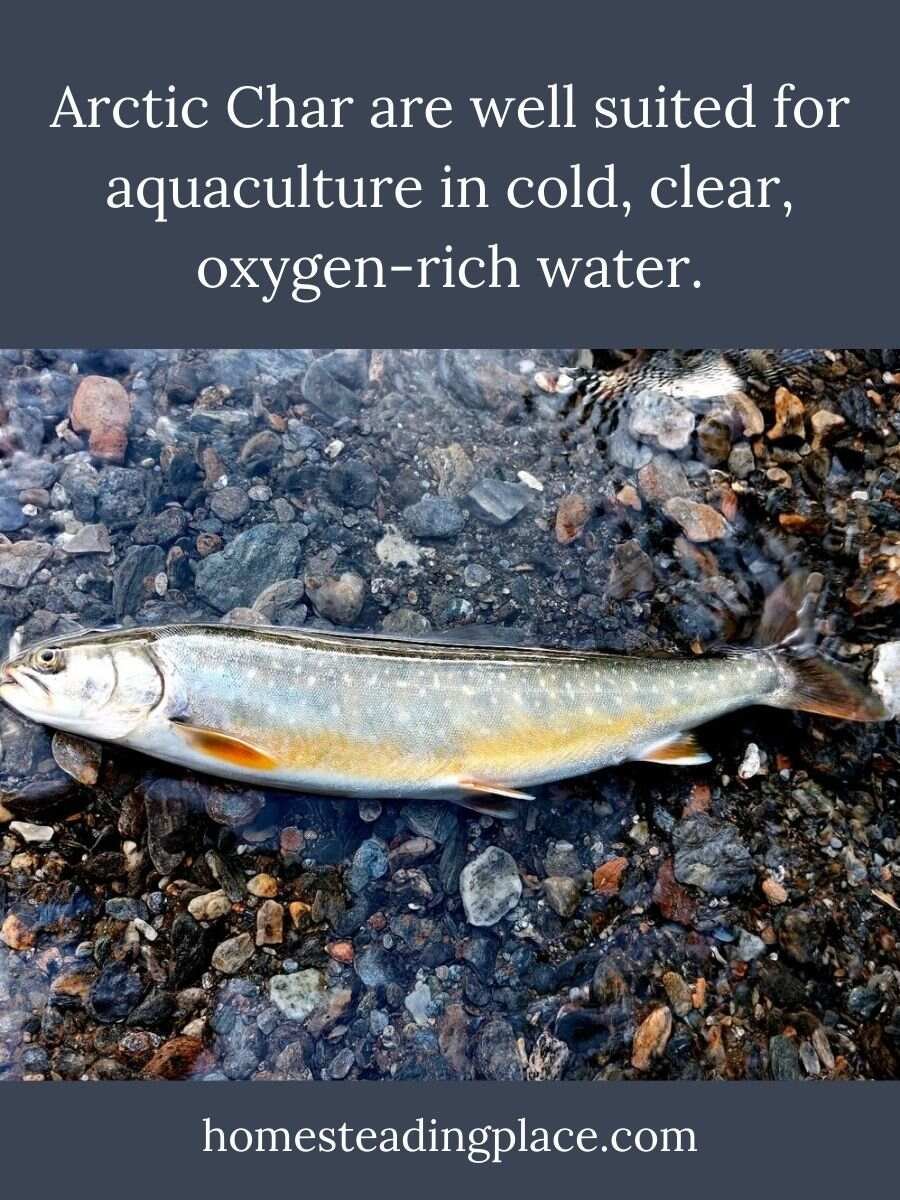
These freshwater fish eat zooplankton and insects, shrimp, insect larvae, snails, clams, and some small fish.
You need to feed them four or more times a month. Depending on their feeding and living conditions, they get 2-4 pounds in 2 years.
Also, you can expect the meat flavor to be a mix between salmon and trout.
14. Salmon
Salmon fish prefer cool water and are ideal for northern homesteaders.
They are naturally found in freshwater headstreams, rivers, lakes, and freshwater wetlands with temperatures between 10 and 16 degrees Celsius.
They may need at least 8 feet deep in 5-10% of your pond area.
Also, you can keep them in dry pellets of 100-1000 gallon tanks. For their food, you need to prepare 30 percent raw marine materials and 70 percent vegetable ingredients.
It takes 2 years for salmon to reach full size, and you can harvest buttery, rich, and slightly sweet meat.
You can choose chinook, coho, chum, sockeye, and pink salmon fish for home farming.
15. Eel
Here, I am talking about freshwater eels, which are often found in rivers, streams, and estuaries.
They thrive in water temperatures between 22 and 28 degrees Celcius.
You can farm eels in the pond with the depth of 3-5 feet. Also, tank with 29-125 gallons also do well.
To imitate their natural habitat, you need to manage ample hiding places, change water regularly and provide them good diet.
The natural foods of eels include smaller fish, crustaceans, invertebrates, crabs shrimp, and sea urchins. You can also feed them with blood worms, brine shrimp, and fresh peas.
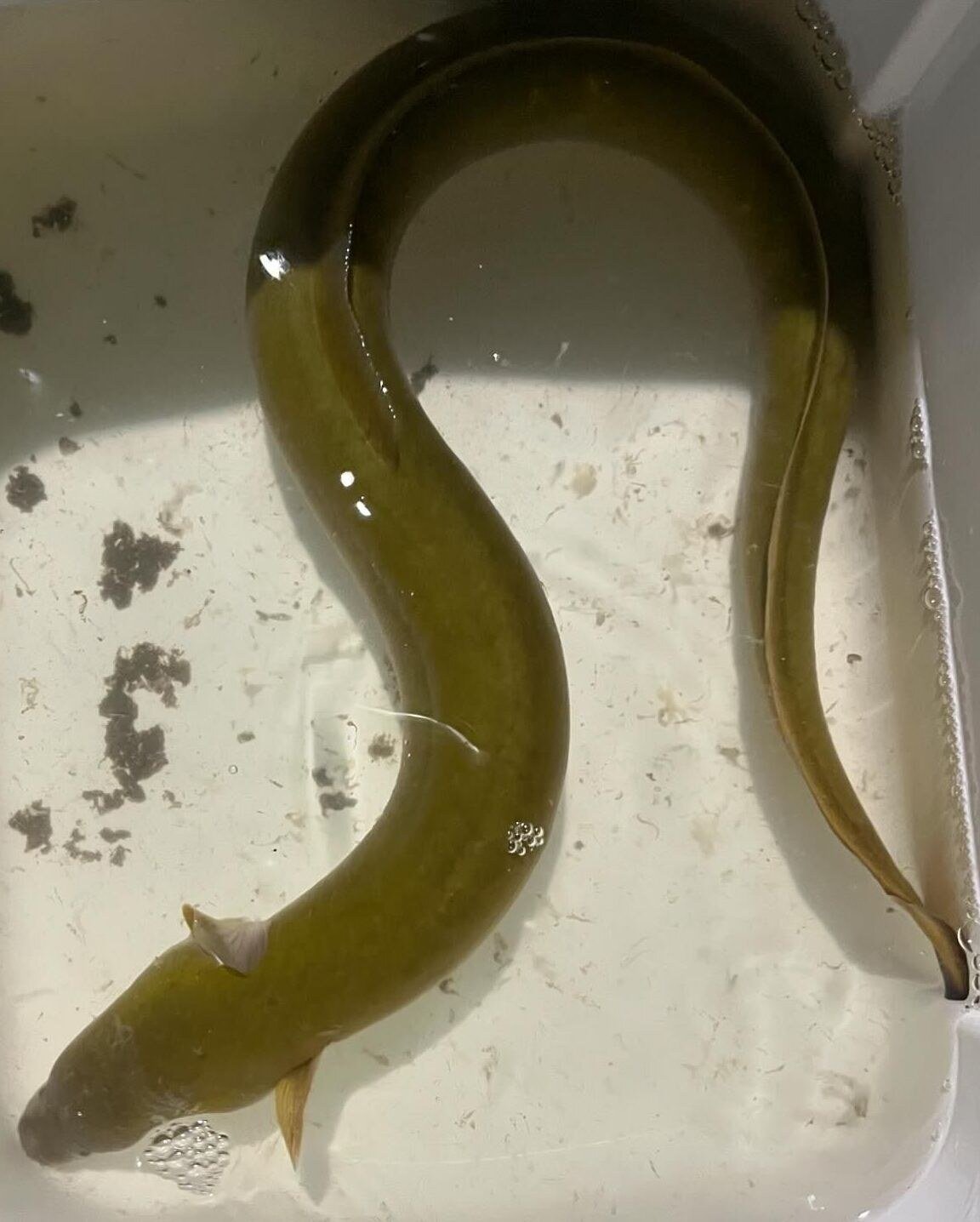
Based on feeding, freshwater eels grow 2 to 5 cm per year. You can find their meat sweet and savory.
Electric, Fire, Tire Track, Zig Zag, Asian Swamp, Purple Spaghetti and Peacock are popular species of freshwater eel.
Final Thoughts
The more bigger pond or tank more space for home farming fish may find to swim, hide and play, avoiding overcrowding.
Also, make sure you clean the pond or tank to save fish from getting sick. Once the culture is finished, don’t add fish fries to the pond until you remove the waste materials by scraping 2-3 inches bottom.
Also, monitor the season change as fish breed at the end of winter or the start of spring.

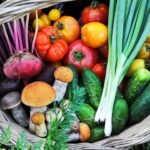

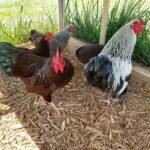
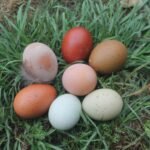
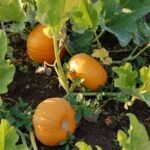
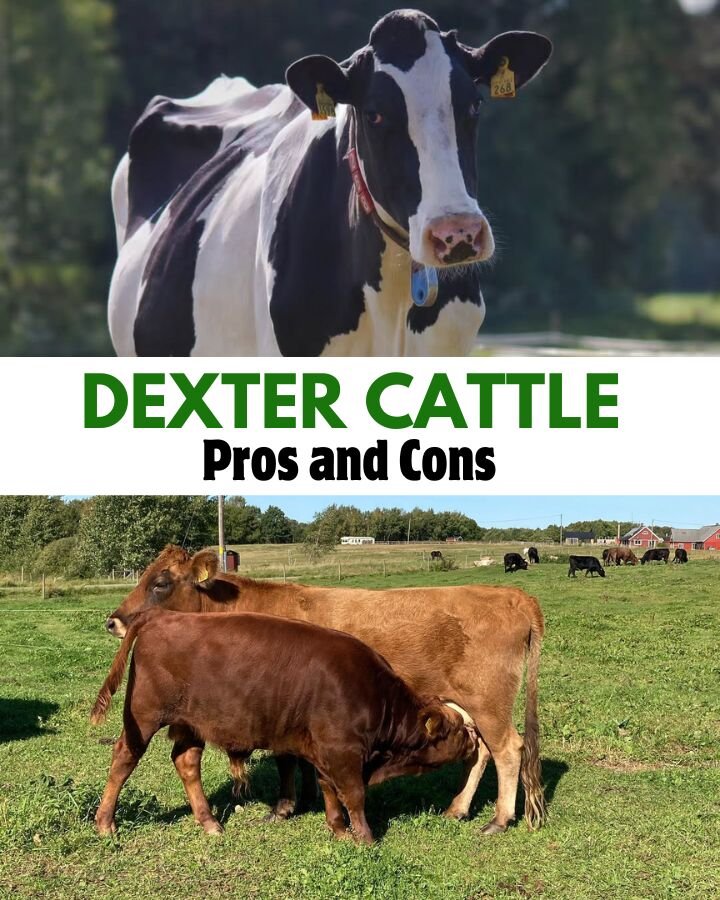

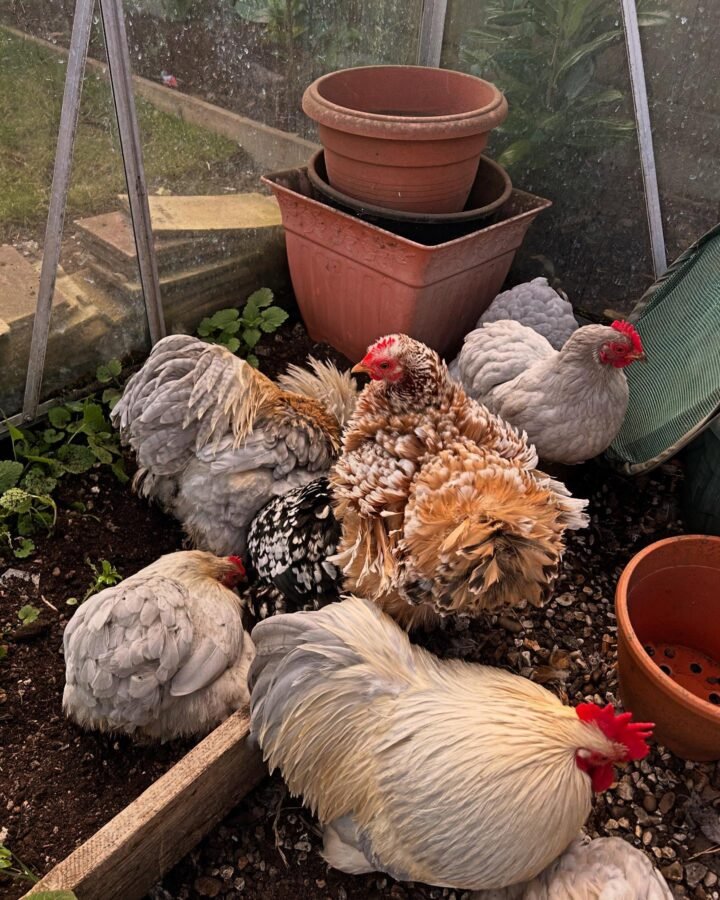
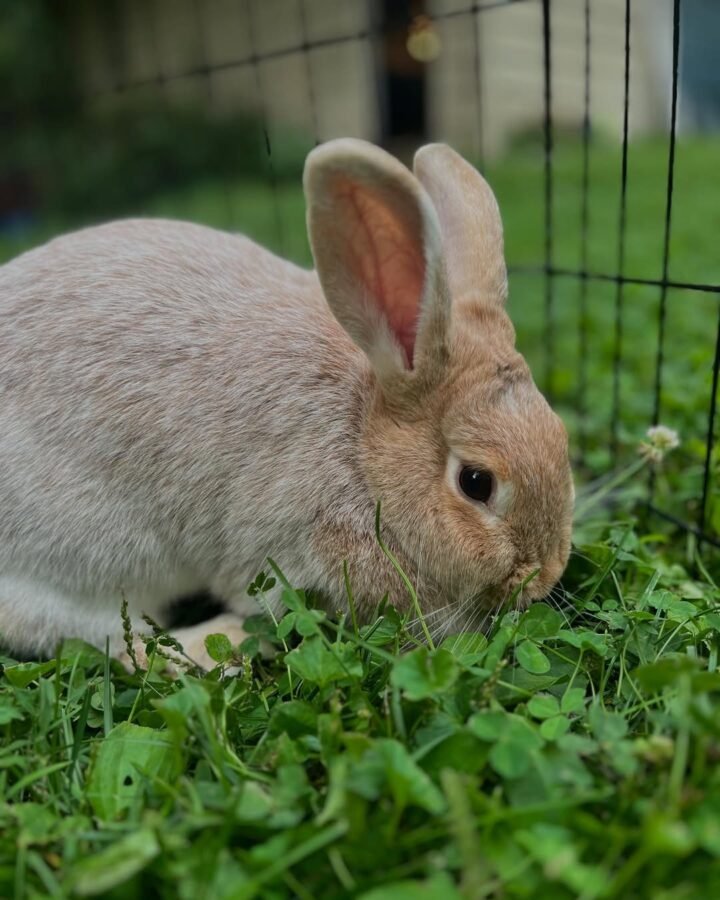
Leave a Reply